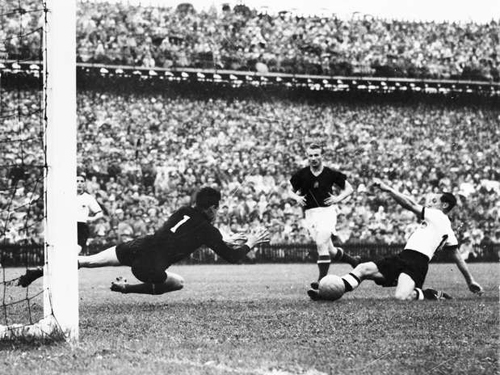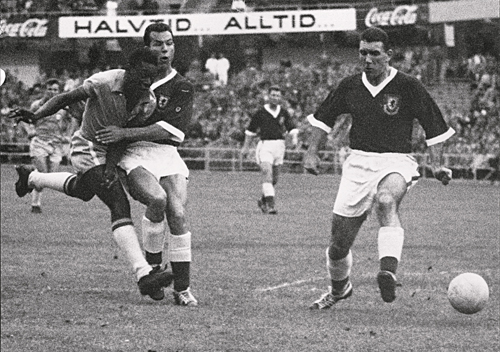6 World Cup TV broadcasting milestones
With Ultra HD 4K set to be the latest World Cup's TV innovation, we take a look back at some of the historic broadcasting milestones from past tournaments

If the news has so far passed you by, you may be interested to hear that Brazil is hosting a footballing shindig this summer and it's getting started in less than a week. In past years, it hasn't been uncommon for the World Cup to be a testing bed for the latest TV tech.
This summer's tournament is no exception – and this time it's Ultra HD 4K. We've already heard how Sony and FIFA have joined forces to produce three live matches in the format, but now the BBC has confirmed it'll be carrying out broadcast trials, albeit privately.
MORE: Ultra HD 4K TV – news, reviews and everything you need to know
We'll be watching, perhaps not literally, with great interest to see how Ultra HD 4K gets on in Brazil at the 2014 World Cup. But with the countdown to the big kick off nearly at its end, we cast our mind back to past TV milestones to see how we arrived at this stage.
MORE: How to watch the 2014 FIFA World Cup on TV and online
1954: First televised World Cup

(Photo via sports.terra.com)
It wasn't until the fifth World Cup – held in Switzerland – that the TV cameras turned up to capture proceedings. The Eurovision network had gone live, which let the BBC show a handful of games from the tournament to audiences back home.
The latest hi-fi, home cinema and tech news, reviews, buying advice and deals, direct to your inbox.
1958: ITV jumps on the bandwagon

(Photo via goal.com)
Until the launch of ITV in 1955, the BBC had all the aces when it came to British TV. But the fledgling commercial network made its presence felt in 1958 with the start of what is now common dual-network coverage of the tournament.
But if you think live coverage of the World Cup – however restricted – was now a matter of course, 1962 proved otherwise as the technology to broadcast from Chile just wasn't in place. The BBC went solo as delayed coverage two days old was as good as it got.
The first Telstar satellite went live just after the 1962 tournament, but 1966 saw football "come home" and meant that live coverage was almost a formality...
1970: Colour makes its debut

By the time the World Cup went back across the Atlantic in 1970, technology had taken impressive strides forward. It was the first World Cup broadcast live by satellite that had been held outside Europe and the first in glorious colour.
2002: The World Cup goes digital

(Photo: Neal Simpson/Empics via The Guardian)
The 2002 World Cup was the first to be co-hosted by two countries in Japan and South Korea, but perhaps more importantly from a televisual point of view, it was the first to be fully covered in digital – and by HBS, independent of FIFA.
2006: Wide of the mark?

(Photo via footballgeezer.blogspot.co.uk)
High-definition, widescreen and digital – the coverage of the 2006 World Cup was the first "tapeless" tournament. Add to that the fact broadcasters could now access content "at will" from a new Media Server, and times were a-changing.
2010: Three Lions in Three Dimensions

(Photo: AP Photo via sport24.co.za)
Our last milestone is perhaps a warning from history as far as 4K is concerned? 3D TV arrived in South Africa, but has since been dropped by the ESPN and BBC – decisions that have seen the technology put to one side heading towards Brazil.
Will Ultra HD 4K thrive at this year's World Cup? Or will it meet the same fate as 3D? It very much remains to be seen, but the waiting is almost over – for both fans of football and televisual enthusiasts. Let the action begin!
BLOG: Will Ultra HD 4K TV be a winner at the 2014 World Cup
MORE: Best TVs to buy in 2014
Pete was content editor on What Hi-Fi?, overseeing production and publication of digital content. In creating and curating feature articles for web and print consumption, he provided digital and editorial expertise and support to help reposition What Hi-Fi? as a ‘digital-first’ title; reflecting the contemporary media trends. He is now a senior content strategist.
